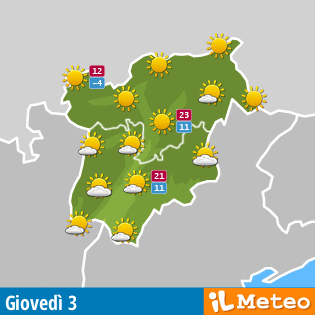Puez Odle
Nature and Beauty
 |
| Italian |

The Puez Odle is the sixth UNESCO World Human Heritage site. This is a mountain group located entirely within the territory of South Tyrol, located exactly at the far north west of the Dolomites and the entire area is a Natural Park. His name is structured in three distinct ways, as falls in culturally different areas. Besides Italian Puez Odle, you can call it Puez-Geisler, in German, or Poezii-Odles, in Ladin.
It’s a complex that extends over a territory of 7.930 hectares, so relatively small. Its importance is mainly for its great variety of geological evidence.
|
The northern part of the group is dominated by two massive: the Odle of Eores Eores/Aferer Geisler with those of Funes/Geisler and Sass da Putia/Peitlerkofel, 2.875 meters high. To the south, the group is bounded by Val Gardena, on the east from Val Badia, instead on the north of the Val d'Isarco and Val di Funes. The latter penetrates deeply into the heart of this UNESCO site. |
|
What that characterizes the south side of the group is a vast rocky plateau, dominated by the Col de Puez, 2.725 meters. On this plateau there are also pastures and a beautiful lake, Lake Crespeina. Part of this plateau is karst in nature so that here stands the Col Sone which has the appearance of an ancient volcano.
Upon Gardena Pass, the Group of Pizzes Cir arises, it’s characterized by bold rocky pinnacles, whose highest peak is Piz da Grande Cir/Grosse Cirspitze of 2.592 feet, that allows spectacular views. Among the best-known peaks, there is the Sassongher, 2.665 meters high. For the grandeur that this summit has, it is the symbol of Corvara, the town over which this mountain stands.
This group appeals for the difference so marked between Puez, with moon landscape made by dark rock, and Odle, typically dolomitic, with heights of peaks and pinnacles of light colour that ends falling in forests of pine and Swiss pine trees. These mountains terminate to the north by Sass da Putia, the highest of all the northern Dolomites. It is a lone cliff overlooking the landscape with its great bulk.
Some more informations on Puez Odle site
Also characterize the latter group is the Dolomites of the Siliar, which is the dominant rock in this area. The peaks are more significant here: the Forcella de Mesdì that cuts the group into two parts, leaving it to the west the real group of Geisler, and southern Sass Rigais which stands at 3.025 meters. Another summit is the Furchetta, of 3.025 meters. In the northern area, the Odle Eores are made of more brittle rocks, perhaps not suitable for Dolomites climbing but certainly they have a high geological value. On the sides of these mountains you can see the different layers of different geological eras, so that scholars seem to browse an open book.
The different sequence of sediments, deposits of terrestrial environments, of volcanic rocks, lagoons and signs of tidal flats to deep submarine basins, make up a huge variety of landscapes and geological. Right here, in the Puez Odle Natural Park, the entire stratigraphic succession in the Dolomites focuses, the eras ranging from Permian to Cretaceous. This part of the Dolomites has received relatively intact despite the strong erosion and the passage of time. For example on the Puez-Gardenazza plateau there are stores that testify to the processes that occurred since the last great ice age to today.
